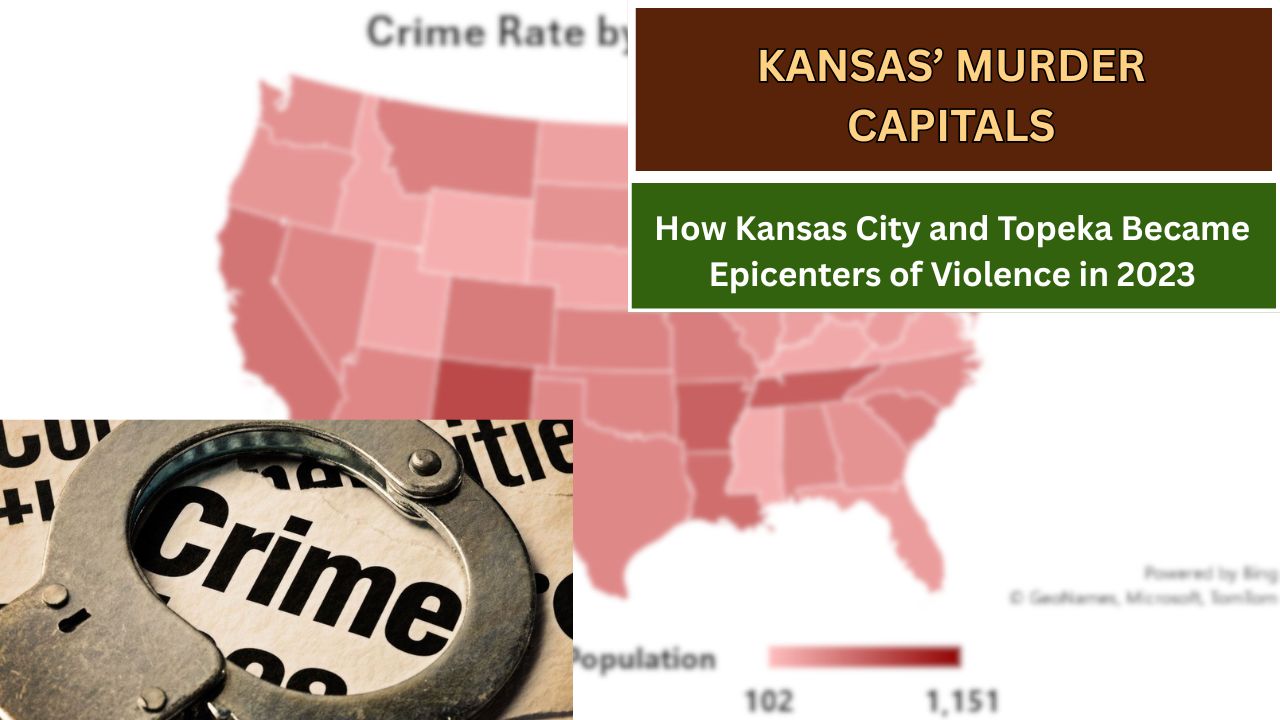Kansas has long been known for its heartland values, wide-open plains, and peaceful suburban life. But in 2023, parts of the state found themselves grappling with an alarming rise in violence. Kansas City, Missouri, and Topeka, Kansas, stood out as the state’s most dangerous cities, both recording their highest homicide rates in recent memory.
Kansas City Sets Grim Record With 185 Homicides in 2023
In 2023, Kansas City, Missouri recorded 185 homicides, the highest number in its history, surpassing the previous record of 179 set in 2020. According to KC Police Department records, the majority of these deaths involved firearms, and a significant portion of the victims were Black males.
Children were not spared. At least 10% of the homicide victims were under the age of 18, illustrating the tragic reach of violent crime. The impact on families and neighborhoods has been profound, as noted by local officials and community activists alike.
“This city is hurting,” said Kansas City Mayor Quinton Lucas. “We can’t continue to allow violence to be our norm.” The city has since renewed its focus on community policing and violence prevention programs.
Despite the dark statistics of 2023, Kansas City saw a nearly 20% drop in homicides in 2024, ending the year with 147 reported killings. However, this improvement was offset by a 12% increase in non-fatal shootings, leaving hundreds injured and underscoring the persistent threat of gun violence.
Topeka’s Sharp Increase in Murders Raises Alarm
Meanwhile, Topeka, Kansas—the state’s capital—saw homicides more than double in a single year. In 2022, the city reported 15 murders. That number jumped to 34 homicides in 2023, a disturbing trend that surprised many in the relatively small city.
At least eight of the victims were minors, according to WIBW News. Two children were killed in an arson attack in January 2023, and gun violence accounted for half of the youth fatalities throughout the year. As of October 2023, nine homicide cases remained unsolved.
City officials in Topeka are grappling with how to respond. “The rise in juvenile deaths is particularly painful,” said Shawnee County Sheriff Brian Hill. Law enforcement agencies have launched joint task forces to curb youth involvement in gangs and provide support to at-risk families.
A Statewide Concern With National Comparisons
Kansas City, Missouri, had a homicide rate of 30.7 per 100,000 residents in 2021, ranking it among the highest in the nation, according to FBI crime data compiled by Wikipedia. That figure has remained stubbornly high even as some U.S. cities have seen decreases in recent years.
In contrast, Kansas City, Kansas—located just across the state line—doesn’t make the list of the most dangerous cities in the state. Its violent crime rate is roughly 5 incidents per 1,000 residents, as reported by Reolink, suggesting a stark divide in public safety despite their proximity.
Community Response and Preventative Measures
In both Kansas City and Topeka, local governments and nonprofits are implementing a variety of strategies to address the root causes of violence. Initiatives include:
- Community-based policing and violence interrupter programs
- Youth mentorship and gang intervention efforts
- Gun buyback programs and stricter regulation proposals
Organizations like KC Common Good and Topeka’s Safe Streets Coalition are working alongside law enforcement to develop sustainable solutions.
Governor Laura Kelly has also expressed concern about the rise in violence. While criminal justice policies fall under local jurisdiction, her office supports initiatives to expand mental health care, reduce poverty, and address housing instability—all factors linked to community violence.
What Lies Ahead?
While the drop in homicides in Kansas City in 2024 offers a glimmer of hope, the underlying conditions remain volatile. Experts warn that progress will depend on long-term investments in education, healthcare, and economic opportunity.
Topeka’s spike in murders—particularly involving youth—serves as a wake-up call that no community is immune to violent crime. As investigations continue and families seek justice, the state must take a comprehensive approach to prevent another record-breaking year.
This article has been carefully fact-checked by our editorial team to ensure accuracy and eliminate any misleading information. We are committed to maintaining the highest standards of integrity in our content.

Outside of work, he enjoys playing chess, following cricket, and writing short stories. His commitment to integrity and in-depth analysis strengthens OTE News’ mission of providing trustworthy journalism.




